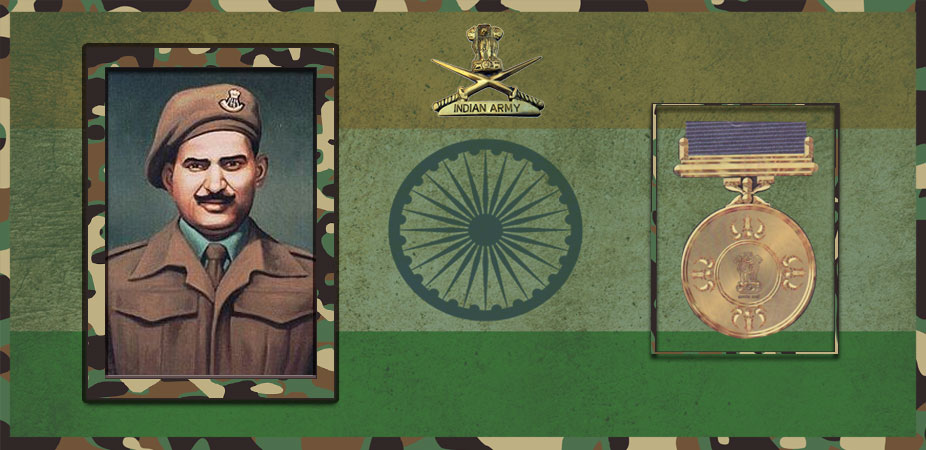Let's salute to our Indian Army together, We are proud to be Indian.
Let's salute to our Indian Army together, We are proud to be Indian.

Company Havildar Major Piru Singh Shekhawat (20 May 1918 – 18 July 1948) was an India Army non-commissioned officer, awarded the Param Vir Chakra (PVC), India’s highest military decoration.
Singh enrolled in the British Indian Army on 20 May 1936, and was assigned to the 1st Punjab Regiment. Between 1940 and 1945, he served on the North-West Frontier and as an instructor, before deploying to Japan as part of the British Commonwealth Occupation Force. After independence, he took part in the Indo-Pakistani War of 1947, serving with the Indian Army’s 6th Rajputana Rifles. During the battle, Singh was part of the leading section of a company that was assigned to capture a Pakistani post at Tithwal, in Jammu and Kashmir. Soon after their attack was launched, the company suffered heavy casualties. In time, Singh successfully occupied a Pakistani medium machine-gun post. But, by that time, the entire company lay dead or wounded. Singh was left alone to achieve the objective. He moved out and lobbed grenades at the next enemy post. Before moving to another trench, he received a mortal bullet wound to the head.
Piru Singh was born on 20 May 1918, in village Beri, Jhunjhunu, Rajasthan. He was the son of Lal Singh.His family consisted of seven children—three brothers and four sisters—with Singh being the youngest son. As a young boy, Singh always hated school, as he was unable to cope with the restricted environment. One day, after being scolded by his class teacher for quarreling with one of his classmates, Singh ran away, and never returned to school. After that, Singh continued to help his parents in their farm, and grew up to be well-built and handsome youth. Shikar, a local Indian sport, was his favourite game. Though Singh wanted to join the army from his childhood, he was rejected twice, as he was too young, before he was accepted at the age of eighteen.
Piru Singh Shekhawat was enrolled in the 10th Battalion of the 1st Punjab Regiment on 20 May 1936 at Jhelum. After completion of his training, on 1 May 1937, Singh was posted to the 5th Battalion of the same regiment. Despite his earlier hostility to schooling, Singh took education seriously and passed the Indian Army Class Certificate of Education. After clearing a few other tests, he was promoted to lance naik (lance corporal) on 7 August 1940. During his tenure with the 5th Battalion of the 1st Punjab, he saw action on the North-West Frontier.
In March 1941, he was promoted to naik (corporal), and was posted as an instructor to the Punjab Regimental Centre at Jhelum in September. In February 1942, he was promoted to havildar (sergeant). Singh was an outstanding sportsman, he represented his regiment in hockey, basketball and cross-country running at inter-regimental and national level championships. In May 1945, he was promoted to company havildar major (company sergeant major). He served as an instructor until October 1945. After the end of the Second World War, he was sent to Japan as part of the British Commonwealth Occupation Force, where he served until September 1947. Following the partition, Singh was transferred to the 6th Battalion of the Rajputana Rifles.